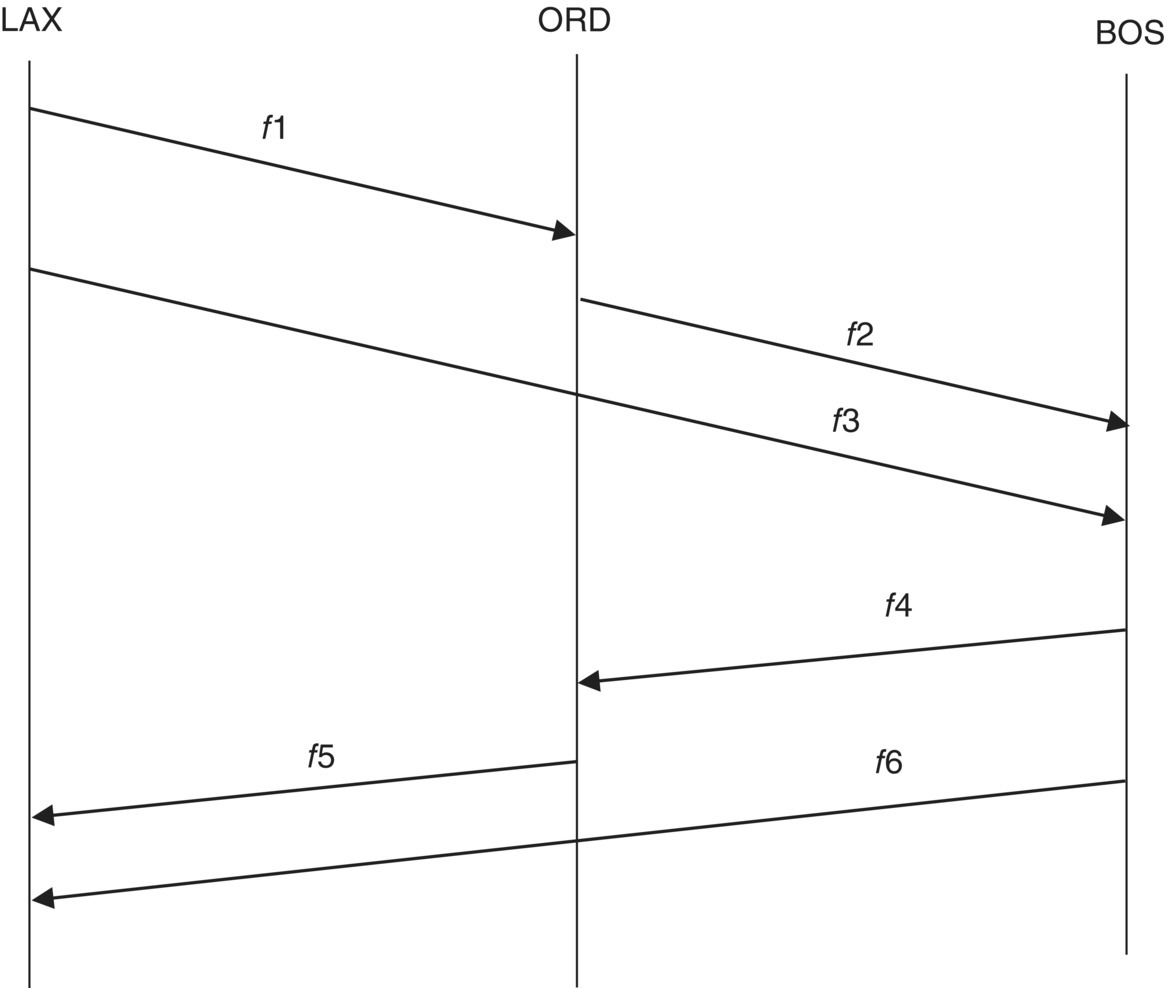20Example on ISD‐IFAM
20.1 Problem Definition
This chapter provides an example that illustrates the application of the integrated schedule design problem based on the itinerary‐based fleet assignment model (ISD‐IFAM). The example presented here extends the example presented in Chapter 17 to consider the case in which the schedule can be adjusted by possibly eliminating some of its optional flights. Figure 20.1 shows the flight schedule of a hypothetical airline that consists of six flights serving between LAX, ORD, and BOS. These six flights are identified as LAX‐ORD (f1), ORD‐BOS (f2), LAX‐BOS (f3), BOS‐ORD (f4), ORD‐LAX (f5), and BOS‐LAX (f6). They represent the set of master flights. Flights f1, f3, f5, and f6 are assumed to be mandatory, while flights f2 and f4 are optional.

Figure 20.1 An example of a hypothetical airline with six flights for the ISD‐IFAM problem.
As shown in the figure, each of the city‐pairs LAX‐ORD, ORD‐LAX, ORD‐BOS, and BOS‐ORD is served by nonstop flights. The city‐pairs LAX‐BOS and BOS‐LAX are served by both nonstop and connecting itineraries. For example, the city‐pair LAX‐BOS is served by the nonstop itinerary f3 and the connecting itinerary f1 − f2. Similarly, the city‐pair BOS‐LAX is served by the nonstop itinerary f6 and the connecting itinerary f4 − f5. Accordingly, the network includes a total of eight itineraries, which are LAX‐ORD, ORD‐BOS, ...
Get Airline Network Planning and Scheduling now with the O’Reilly learning platform.
O’Reilly members experience books, live events, courses curated by job role, and more from O’Reilly and nearly 200 top publishers.

